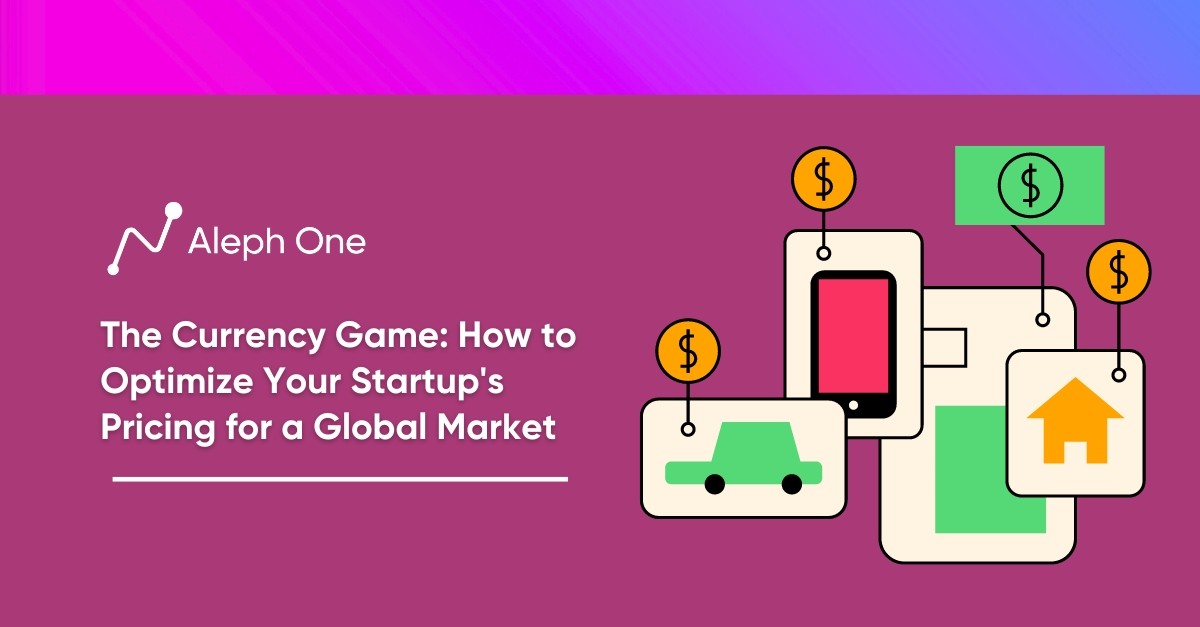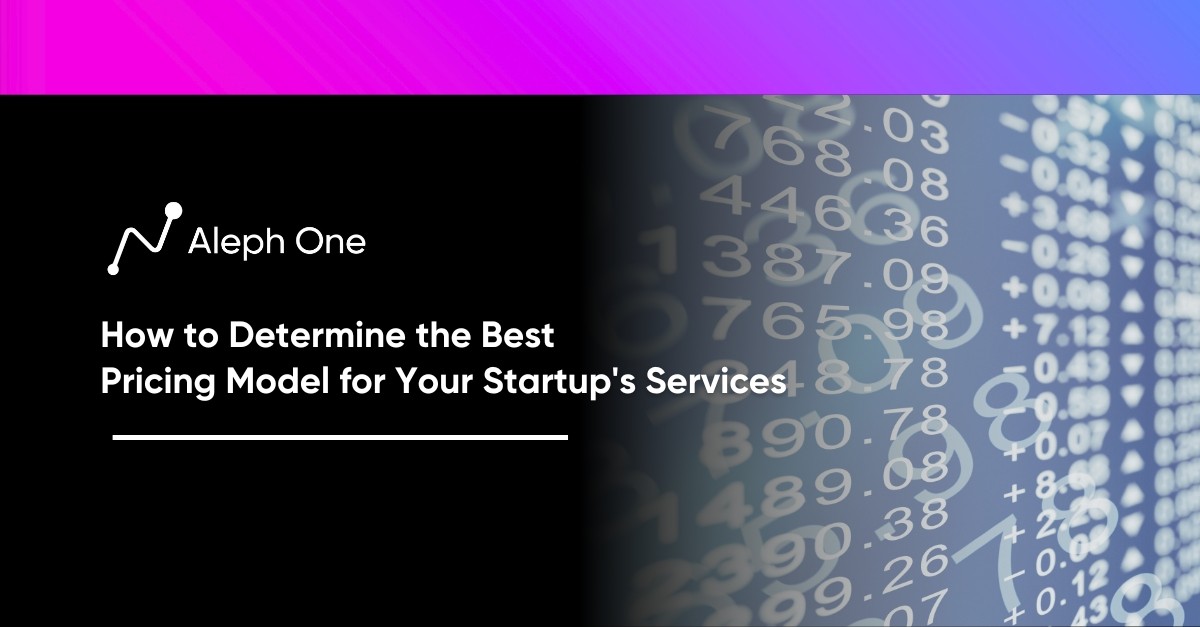Let’s work together to build something amazing. Share your project details and our team will reply to figure out the next steps to your success.

In today’s rapidly evolving business landscape, mastering the art of pricing is a crucial factor for startup success, especially in a global market. This article explores the intricate world of pricing psychology, strategies, and models that startups need to navigate for sustainable growth. This article unveils the strategies that drive revenue maximization, from unraveling the profound impact of price anchoring and perceived value on consumer decisions to understanding the dynamic pricing techniques that respond to real-time market changes. Learn the currency game and equip your startup with the pricing strategies that can make all the difference in a globally competitive arena.

The Psychology of Pricing: How Price Anchoring and Perceived Value Drive Decisions
How consumers perceive prices has a huge impact on their purchasing decisions. Two key factors that influence price perception are price anchoring and perceived value. Price anchoring refers to the tendency for people to rely on the first price they see as a reference point for determining if a deal is good or bad. This is why retailers will often put higher-priced goods next to the product they want to sell, to make that product seem like a better deal in comparison.
What is Price Anchoring?
For example, Apple frequently releases new iPhones at a high price point, around $1,000. Then, a few months later, they drop the price of older models to $600-$700. Due to price anchoring, that $600 iPhone now seems like a steal, even though the price is still quite high in absolute terms. Starbucks employs a similar strategy by offering premium-priced coffees and snacks alongside their core coffee offerings. This makes a $5 latte seem reasonable compared to a $10 cold-pressed juice.
Perceived Value
Perceived value refers to how much value a customer believes they are getting from a product or service based on rational factors like features and quality and emotional factors like brand and experience. Startups must determine where their product fits on a value spectrum from low-cost commodity to premium experience. A product with a high perceived value can command a higher price, while a product with a low perceived value will need a lower cost to drive sales.
Prestige and Status Value
For example, a handcrafted artisanal food product would likely have a higher perceived value than an ordinary grocery store item. An innovative tech gadget with a unique experience may have greater perceived value than a basic model. High-end luxury brands can charge premium prices due to the perceived prestige and status value.
Startups can make strategic pricing decisions by understanding how price anchoring and perceived value impact their customers. They can use price anchoring to make their product seem like a better deal and optimize their pricing based on the level of perceived value for their target customers. With the right pricing strategy, startups can drive sales, gain market share, and build a sustainable business.
Dynamic Pricing: How to Respond to Market Changes in Real Time
Dynamic pricing, also known as real-time pricing, allows startups to adjust prices quickly in response to market changes. Rather than setting static prices, startups can utilize dynamic pricing models to maximize revenue based on demand, competition, and inventory levels.
Uber – Adjusting Fares in Real Time
For example, Uber uses an algorithm to calculate fares for each ride based on the current demand for rides, available drivers, traffic conditions, and other factors. The company can adjust fares in real time to balance supply and demand, charging higher fares when the need exceeds the supply of drivers. This helps Uber maximize the revenue for each ride.
Disneyland – Dynamic Pricing
Disneyland also uses dynamic pricing for its admission tickets and annual passes. The company adjusts ticket prices based on the predicted attendance for a given day. Days that are expected to have higher attendance due to holidays or school breaks often increase prices over regular days. This helps Disneyland spread attendance to improve the customer experience and increase profits.
Tools to Implement Dynamic Pricing Models
Several tools are available to help startups implement dynamic pricing models. Price optimization software can analyze demand forecasts, competitor pricing, and inventory data to recommend optimal price changes. Revenue management systems provide real-time insights to help startups adjust pricing. And many ecommerce platforms offer built-in dynamic pricing capabilities, allowing startups to create automated pricing rules.
Things to Consider with Dynamic Pricing
For startups, there are a few critical considerations with dynamic pricing. Startups must determine which factors most influence demand and competition in their industry. They must have the technology capabilities to adjust prices frequently and the analytics to optimize their pricing strategy. Startups must also consider how dynamic pricing may impact customer perception and loyalty. Frequent or drastic price changes could frustrate some customers.
With ecommerce growing rapidly, dynamic pricing has become increasingly popular. According to research, the number of retailers utilizing dynamic pricing models has grown by over 200% in the past five years. For startups seeking to maximize revenue, dynamic pricing is a strategy that can help them adapt to changes in the market and stay ahead of the competition.
Freemium and Subscription Models: Finding the Right Balance
Freemium and subscription pricing models have become popular for SaaS and ecommerce companies. The freemium model offers a free basic product or service to attract customers, then charges for premium features and upgrades. The subscription model charges customers a recurring fee, typically monthly or annually, to access a product or service.
What is the Freemium Model?
For startups, the freemium model has the benefit of attracting new customers with a free offering. However, convincing free users to convert to paid plans can be challenging. The subscription model provides predictable recurring revenue but requires providing enough value to keep customers subscribed. Many companies find success by combining these models.
Spotify, Dropbox, and Mailchimp
Spotify, the music streaming service, uses a freemium model where basic features are free but an ad-free premium subscription unlocks higher audio quality and offline listening. Dropbox, the file-sharing service, offers free storage up to a limit, then charges for additional storage and business features. Mailchimp, the email marketing platform, has a free plan for up to 2,000 subscribers and paid plans with additional features for larger email lists.
The Pros of the Freemium Model
The pros of the freemium model are that it can drive high adoption and reach new customers easily. However, according to estimates, conversion rates to paid plans tend to be low, around 3-5%, and it can be challenging to scale. The pros of subscriptions are predictable revenue and higher customer lifetime value. But subscriptions require continuous value delivery to avoid churn and cancellations.
How to Determine When to Introduce Paid Subscription Plans
For startups, the ideal balance depends on your product, customers, and business model. It may help to start with a freemium model to gain traction, then introduce paid subscription plans. Or launch with a free trial before moving to a subscription model. You need to determine how much value is enough for free users versus paid subscribers. Consider offering bundle deals or discounts for customers who subscribe to multiple products.
With the growth of ecommerce and SaaS, subscription revenue models have become popular and are projected to continue increasing by over 100% year over year. Starts can take advantage of these massive opportunities by optimizing your pricing strategy and finding the right balance between free and paid plans. The ultimate goal is to provide enough value to turn free users into long-term paying customers.
Optimizing Pricing for Global Markets: Overcoming Challenges
For startups looking to expand into global markets, optimizing pricing across different countries and cultures can be one of the biggest challenges. Customer demand, purchasing power, and competitor pricing vary significantly between markets. However, with the right tools and strategies, startups can research pricing in new markets and determine the sweet spot that maximizes revenue while accounting for local factors.
Research Product Customer Demand and Price Sensitivity
One of the first steps is researching your product’s customer demand and price sensitivity in the new market. While your product may be a premium offering in one country, it could be viewed as a necessity or budget option in another. You’ll need to determine how much the target customers in each market are willing and able to pay.
Evaluate Competitor Pricing
Startups should also evaluate competitor pricing in each market to determine how to position their pricing competitively. In some markets, you may be able to charge a premium price, while in others you may need to match or beat competitors on price due to intense price competition. Tools like SEMrush, SimilarWeb, and Alexa can help you analyze competitor pricing.
Purchasing Power
Purchasing power refers to how much customers in a market can afford to pay for a product. In markets with lower purchasing power, startups may need to adjust pricing downwards to match what customers can afford. Big Mac Index and Numbeo are tools that provide purchasing power data for different countries.
Adjust Pricing to Different Markets
Some companies address these challenges by using dynamic pricing models that automatically adjust to different markets. Others may take a more manual approach, setting lower prices in developing markets where customers are very price-sensitive, then raising them over time as demand grows and the market matures. Balancing revenue, profit margins, and customer satisfaction in each unique market is key.
With global ecommerce sales continuing to rise, optimizing pricing for international markets is crucial for startup growth. While it requires in-depth research and work, if done right, it can increase revenue, improve customer loyalty, and gain competitive advantage globally. The challenges are significant, but so are the rewards. With the right tools and data-driven strategies, startups can overcome obstacles and master the art of global pricing.
Bundling for Customer Value: How to Bundle Products and Services
Bundling refers to combining multiple products or services into one package at a discounted price. It is a pricing strategy that provides value to both customers and startups. For customers, bundling means paying less for more and the convenience of a single purchase. For startups, bundling increases sales volumes and customer loyalty.
Types of Bundling
There are several types of bundling for startups to consider:
- Product bundling: Combining multiple physical or digital goods into one package. For example, McDonalds meal bundles and cable TV channel bundles. This works well for startups with complementary products.
- Service bundling: Packaging multiple services together at a lower price than purchasing separately. For example, Verizon’s mobile and home internet bundle. This can be an easy way for startups to cross-sell to existing customers.
- Hybrid bundling: Bundling a mix of both products and services. For example, Disney’s bundle of theme park tickets, hotel stay, and meal plans. This model provides maximum value to customers and drives higher spending.
How to Determine Optimal Bundle Pricing
To determine optimal bundle pricing, startups need to consider the individual product prices and their perceived value to customers. The bundle discount should be significant enough to drive sales while still maintaining profitability. It may take testing different price points to find the right balance.
Price Intelligently and ProfitWell
Tools like Price Intelligently and ProfitWell can help calculate suggested bundle pricing. They factor in metrics like customer lifetime value, retention rates, and willingness to pay to determine the optimal discount and bundling strategy.
Customer Benefits with Bundling
Bundling has been shown to increase customer loyalty, lower churn, and boost customer lifetime value. According to studies, bundling can increase customer retention up to 54% due to the perceived added value. The convenience and discount also make customers more reluctant to switch to competitors.
For startups, bundling is a proven pricing strategy to drive sales, increase customer loyalty, and gain a competitive advantage. With the right bundling of products and services at an optimal price, startups can significantly impact their revenue and growth.
Pricing Models for Gaming Apps: In-App Purchases, Subscriptions, and Beyond
The gaming app industry has several popular monetization models to choose from. In-app purchases (IAPs) allow players to purchase within a free game to access premium content or features. Top grossing games like Candy Crush Saga and Clash of Clans use this model. IAPs are a popular choice because the low barrier to downloading a free game leads to a large player base. However, IAPs often convert at a low rate, and revenue can be unpredictable.
Subscription Models – Recurring Revenue
Subscription models provide recurring revenue through monthly or annual fees to access a game. Many massively multiplayer online games like World of Warcraft and Final Fantasy XIV use subscriptions. Subscriptions provide predictable revenue but the high cost of entry reduces the potential player base. Gaming streaming services like Google Stadia and Apple Arcade also use subscription models.
Pay-to-Play Model
The pay-to-play model charges an upfront download fee to access a game. This model was more popular before the rise of free-to-play games but is still used for specific console and PC games, especially in genres like sports or role-playing games. The upfront cost reduces the player base but provides higher and more predictable revenue per user.
Advertising Models
Advertising models place ads within a free game to generate revenue. Many casual games like Words with Friends 2 and Bubble Witch 3 Saga use advertising. While advertising provides revenue from a large player base, it often generates lower revenue per user and can reduce the player experience.
For gaming startups, the choice of monetization model depends on the game genre, platform, and business goals. Subscription and pay-to-play models may work better for niche games, while IAPs and advertising suit a mass market. Startups should research the models used by competitors and top-grossing games in their genre. They can then test different models with a subset of users to determine the optimal pricing strategy before fully launching the game. With the global gaming market reaching $152 billion, choosing the right pricing model is critical to success.
FAQ
You mentioned price anchoring and perceived value as influential factors in price perception. Could you further elaborate on the psychological principles working behind these concepts and how startups can better use them in their pricing strategies?
The psychological principles behind price anchoring and perceived value are based on cognitive biases. Price anchoring capitalizes on the anchoring bias, where the first piece of information (like an initially high price) serves as an anchor point for all subsequent evaluations. A lower price following this initial anchor appears highly attractive and compelling to consumers. A startup can optimally use this principle by initially setting a relatively high reference price and then providing a discount or introducing a lower-priced alternative.
Similarly, the principle of perceived value stems from the subjective utility theory, which suggests that consumers derive value not only from the functional benefits of a product but also from intangibles like emotions or social identity. Startups can leverage this by clearly highlighting the unique benefits and emotional connection their product or service can provide, thereby increasing its perceived value and consumers’ willingness to pay a premium for it.
Dynamic pricing looks like a beneficial strategy for startups. However, how can a startup effectively implement it without frustrating customers with frequent or drastic price changes?
Implementing dynamic pricing effectively without frustrating customers requires transparency, predictability, and fairness. Startups should clearly communicate how and why prices may fluctuate. For example, Uber informs customers about surge pricing and Disneyland provides information on ticket prices based on expected footfalls. It’s essential to be consistent in applying dynamic prices while assuring customers that they are getting value for their money. Offering price locks for a certain period or rewards for loyal customers may also help maintain a positive customer perception amidst dynamic pricing.
In the freemium and subscription models, you highlighted a low conversion rate from free users to paid plans. What are some strategies that can effectively boost this conversion rate?
3. Boosting conversion rates from free users to paid plans requires clear communication of value, judicious use of limitations on free plans, and careful timing of prompts for upgrades. The limitations on the free plan should strike a balance, but should limit access to some top features or resources that are highly useful. Additionally, personalized prompts to upgrade based on users’ product use can make them perceive the value in upgrading. Offering exclusive features, enhanced services, or time-sensitive deals can also entice users to move from free to paid plans.
Get the latest news and updates from Aleph One in your inbox.



